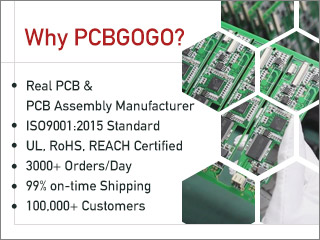How Eco Regulations Are Shaping HDI PCB Manufacturing
Environmental Trends Reshaping HDI PCB Production
As green manufacturing and sustainability trends gain prominence worldwide, environmental regulations are profoundly impacting HDI (High-Density Interconnect) PCB production. Utilized in high-end markets such as smartphones, automotive electronics, and medical equipment, HDI boards now face heightened scrutiny. From raw material choices to chemical processes and carbon tracking, manufacturers must adapt to stringent eco-guidelines. Below, we explore how environmental imperatives are transforming HDI production workflows.
1. Widespread Shift to Halogen?Free Laminates
Traditional HDI boards often incorporate halogenated epoxy resins that emit toxic gases like dioxins when heated. To comply with RoHS and REACH standards, manufacturers are transitioning to halogen-free alternatives such as Halogen-Free FR-4 and BT resins.
Benefits: These halogen-free laminates offer superior thermal and dimensional stability—essential in high-frequency environments.
Challenges: Their higher cost and narrower fabrication tolerances require process optimizations and tighter quality control at manufacturing facilities.
2. Adoption of Cleaner Chemical Processes
HDI fabrication involves precise laser drilling and subsequent treatments like electroless copper plating and etching. Older methods rely on heavy metals and aggressive chemicals—not ideal under modern environmental standards.
Cyanide-free plating replaces hazardous gold plating chemicals, significantly reducing toxicity risks.
Low-copper etching controls foil thickness to minimize chemical usage and improve yield.
Closed-loop wastewater recycling enables factories to purify and reuse water, dramatically cutting emissions.
These eco-driven process improvements align with the demands of quick and compliant manufacturing practices.
3. Green Fabrication: Subtractive and Dry Processes
Leading HDI producers are shifting to subtractive techniques like mSAP (Modified Semi-Additive Process) and aSAP (Advanced Semi-Additive Process), which:
Achieve finer trace patterns without significant chemical waste.
Reduce the volume of etching chemicals needed.
Lower production costs in the long run by minimizing environmental impact.
This transformation supports both performance and sustainability goals for next-gen electronics.

4. Carbon Footprint Now a Manufacturing KPI
Global OEMs increasingly require carbon accounting throughout the PCB lifecycle—from material sourcing to end-of-life disposal—forcing suppliers and fabricators to rethink:
Raw material selection, favoring recycled or renewable sources.
Supply chain logistics, aiming to minimize transport emissions.
Onsite carbon management systems, enabling producers to offer validated low-carbon products.
Manufacturers are now delivering HDI PCBs accompanied by official carbon footprint certifications.
5. Sustainability as a Competitive Necessity
Eco-awareness is no longer optional in HDI production—it’s a critical factor in market competitiveness. Manufacturers must demonstrate compliance and innovation across several areas:
| Environmental Requirement | Impact on HDI PCB Manufacturing |
| Halogen-Free Materials | Promotes secure thermal and signal performance, reduces toxic emissions |
| Cleaner Chemical Processes | Minimizes waste, improves worker safety, and cuts processing expenses |
| mSAP/aSAP Fabrication Techniques | Supports finer resolution while reducing environmental footprint |
| Carbon Footprint Monitoring | Enables eco-claims and aligns with global sustainability goals |
By balancing performance, compliance, and responsibility, forward-thinking manufacturers gain market trust and regulatory favor.
6. PCBGOGO: Making Eco-Compliant HDI Accessible
As a leading PCB supplier, PCBGOGO is at the forefront of integrating sustainable practices into HDI PCB production. Whether you’re developing a printed circuit board prototype or preparing for full-scale deployment, PCBGOGO offers:
Certified halogen-free material options
Advanced chemical and plating systems
High-precision quick turn PCB fabrication with environmentally structured workflows
Our team ensures performance-driven designs align with global eco-standards, offering clients a clear path to green manufacturing.


